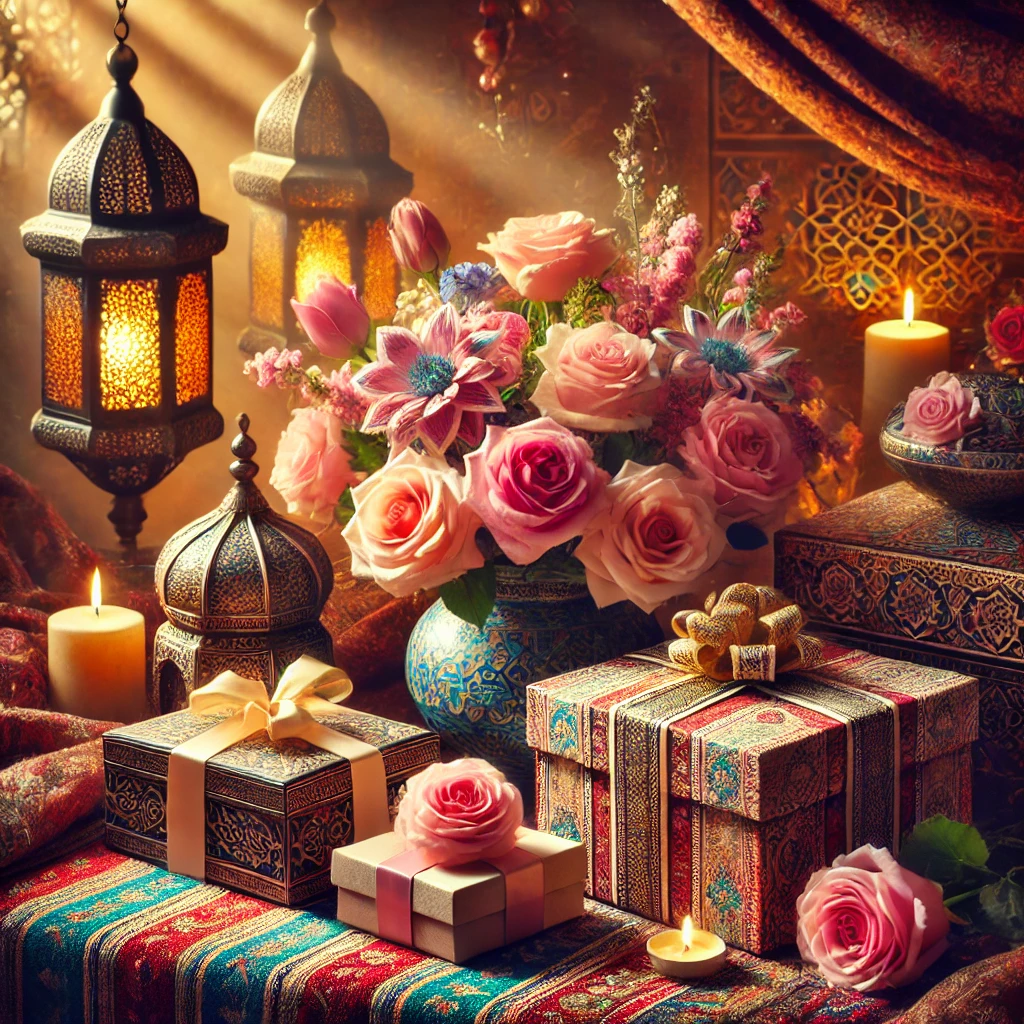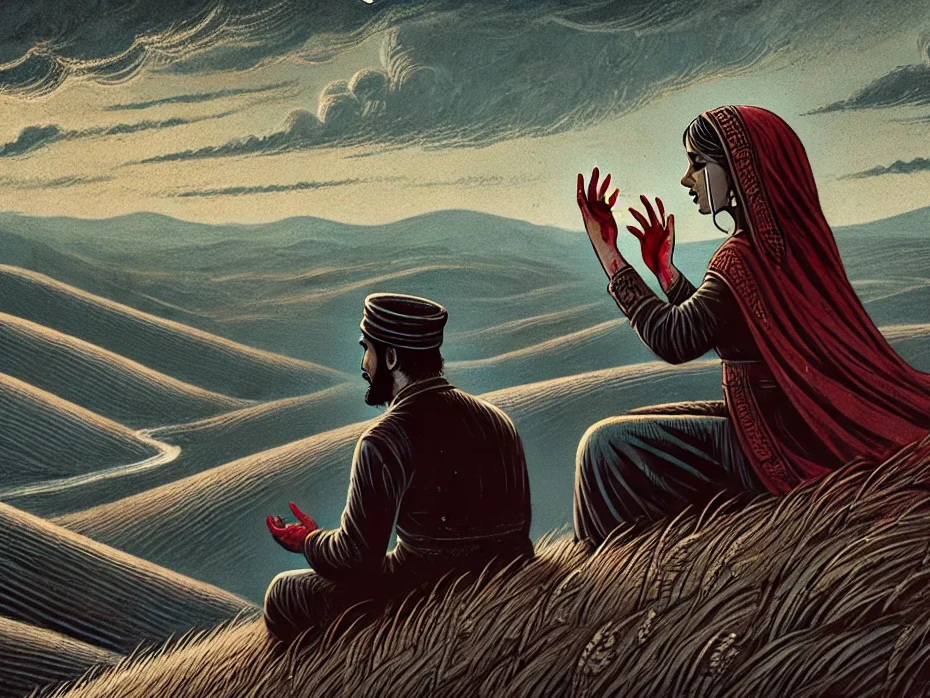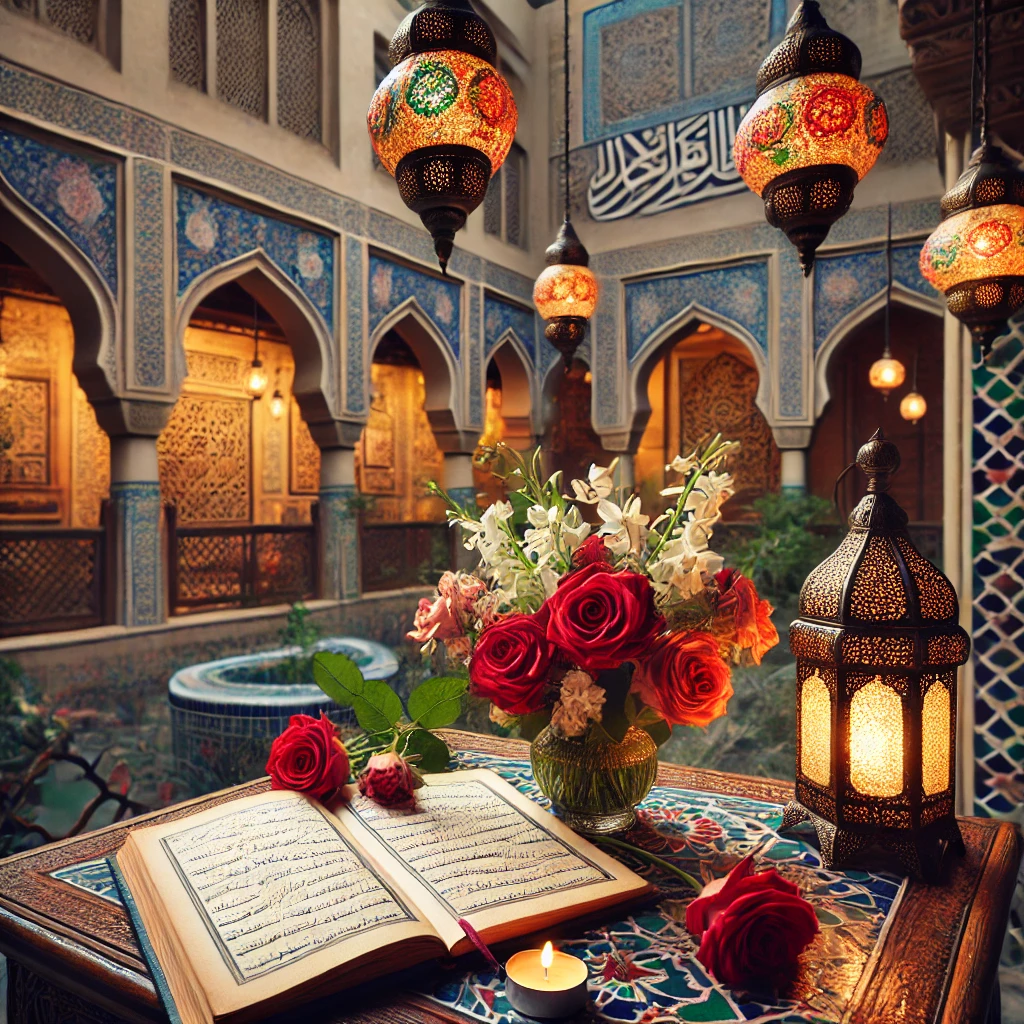Habibi, Be My Valentine: Are Arabs the Most Romantic Lovers?

Yara Marei / Arab America Contributing Writer
On Valentine’s Day, we celebrate love with whispered, written, or sung words. But have you ever wondered if the words we use shape how we feel love itself? In Arabic, love is not just one feeling but a journey, with each stage having its name. Every emotion is captured in a word, from the spark of infatuation to the depths of devotion. Love is expressed more broadly in English, using fewer words to hold many meanings. This makes us wonder: do Arabic speakers experience love more deeply because of their language? Is that why we have the great love myths of Qais and Layla, the songs of Fayrouz, Mayyada Hennawi, Majida El Roumi, and Asmahan, the beautiful poetry of Ibn al-Farid, Nizar Qabbani, and the greatest romance authors in Arab literature, Ghassan Kanafani, and Ghada Samman? Let’s discover the answers with Yara Marei, Arab America Contributing Writer, whose name means love and innocence!
Is Love Shaped by Language, or Does Language Shape Love?

Does language shape our experience of love, or do our emotions define the words we use? Arabic has at least ten distinct words for love, each capturing a different stage or intensity, while English relies on broader terms like love, passion, and devotion. This richness in Arabic makes expressions of love more nuanced and poetic. But does this mean Arabic speakers feel love more deeply, or did their language evolve to reflect their emotional depth? The relationship between language and love is complex, revealing how words influence not just how we express emotions but how we experience them.
Arabic has a rich vocabulary that expresses love in different shades and intensities:
- “Hawaa” Infatuation: A brief or superficial attraction.
- “Sababa” Yearning: A deep longing for someone.
- “Shaghaf” Passion: Intense and consuming love.
- “Wajd” Melancholic Love: Love mixed with sadness.
- “Kalaf” Obsession: A love that becomes all-consuming.
- “Ishq” Deep Love: An overwhelming and intense love.
- “Hiyam” Mad Love: A love so intense it leads to delirium.
- “Taym” Enslaved Love: A strong devotion that one loses oneself.
- “Tadalluh” Love-Induced Madness: A love that causes irrational behavior.
- “Walah” Devastating Love: Love that leads to deep emotional suffering.
The way we speak and the way we experience love are deeply connected. Language shapes how we define and communicate emotions, while our feelings inspire the words we create. We see how language offers a window into how people experience and express love, expressing a unique shade of emotion and reflecting a culture that values emotional depth. Do Arabic speakers feel love more intensely because of these words, or did such words emerge because of how they experience love? The answer lies in the constant interplay between language and emotion, each shaping the other profoundly.
Legendary Love Stories in Arab Culture

Love has always been a central theme in Arab history, celebrated through poetry and storytelling. Legendary love stories passed down for generations highlight deep emotions and lovers’ struggles against societal barriers. Growing up with these myths has gradually shaped cultural values, placing love above rigid social constraints. Since Arab legends have already endured great suffering in the past, their stories serve as a reminder of the price of love and continue to inspire a society that values love over tradition.
Famous Love Stories
The tales of Antar and Abla, Jamil and Buthayna, Kuthair and Azza, and Ibn Zaydun, and Wallada are some of the most iconic examples of tragic love in Arabic and Andalusian literature. These stories showcase the emotional depth of their love and how the pressures of society, tradition, and fate tested their devotion.
Where Antar ibn Shaddad, a brave warrior and poet, fell deeply for Abla, but their love faced endless trials due to traditions and family opposition, despite his many efforts to prove his worth. Similarly, Jamil and Buthayna experienced a love that remained unfulfilled. Jamil ibn Ma’amar adored Buthayna, yet societal restrictions kept them apart. Still, Jamil immortalized their love through poetry. Kuthair and Azza also faced separation, but Kuthair’s unwavering devotion to Azza endured, as reflected in his heartfelt verses. In Al-Andalus, Ibn Zaydun and Wallada shared a passionate yet turbulent romance filled with poetry, jealousy, and betrayal. These tragic love stories are rich with cultural and emotional significance, each one capturing the complexities of love, sacrifice, and the impact of social constraints. They remain a part of the enduring legacy of Arabic and Andalusian literature.
Qais and Layla Love Story

Among all the famous love stories, the tale of Qais and Layla is the most well-known. Qais ibn al-Mulawwah fell deeply in love with Layla Al-Aamiriya. However, her family disapproved and married her to another man. Heartbroken, Qais lost his sanity, earning the name Majnun Layla (“mad for Layla”). He wandered the desert, reciting poetry about his love and sorrow. Eventually, he died from grief, making their story a symbol of eternal and unfulfilled love.
The love story of Qais and Laila is one of the most famous Arab romantic tales, profoundly influencing Persian, Indian, and Azerbaijani arts and countless Arab artistic expressions. Their tragic love has been depicted in various forms, from poetry to music and television. An Arabic series has been dedicated to telling their story, and legendary singer Asmahan performed Majnun Layla, a song inspired by their tale. While the following Qais’s poetry is adapted into a song by a Saudi singer called Abdulrahman Mohammed, filled with passion and longing, which continues to resonate through the time when he captures Laila’s sorrow upon their breakup:
“And when we met on the slopes of a hill,
I found the fingers of Laila Amiriya stained red.
So I asked, “Did you dye your hands in henna celebrating breakup?”
She replied, “God forbid, that is not what happened!
But when I found you leaving,
I wept blood until it soaked the earth.
And as I wiped my tears with the tips of my fingers,
They became stained, just as you see.”A Story of Love and Reunion in the Muslim Culture

While many legendary Arab love stories end in tragedy and separation, love is not always about loss, it can also be about resilience, devotion, and the power of faith to bring lovers back together. One such story is that of Zainab bint Muhammad and Abu al-As ibn al-Rabi, a tale of love tested by faith, distance, and war yet ultimately rewarded with reunion.
Zainab, the eldest daughter of Prophet Muhammad (PBUH), was married to Abu al-As, a noble merchant from the Quraysh, before the rise of Islam. When her father received divine revelation, she embraced Islam, while Abu al-As initially remained a non-Muslim, creating a problematic divide between them.
As tensions between the Muslims and the Quraysh intensified, Abu al-As fought against the Muslims in the Battle of Badr and was taken captive. Upon hearing of his capture, Zainab sent a ransom for his release, a necklace that had once belonged to her mother, Khadijah. This necklace held deep sentimental value, as it was originally a wedding gift from the Prophet Muhammad to Khadijah. When Zainab later married her husband Abu al-As, Khadijah gifted the same necklace to her daughter in a gesture of love.
When the Prophet saw the necklace, a cherished token of his wife and daughter, offered as ransom, he was deeply moved. Khadijah had already passed away by that time, making the sight even more poignant. Out of love and respect for his wife’s memory and his daughter Zainab, he granted Abu al-As his freedom to allow Zainab to migrate to Madinah. However, this also meant their marriage would be dissolved, and Abu al-As would remain in Mecca.
Though separated for years, their love endured. During one of his trade journeys, Abu al-As was ambushed by Muslim forces and sought refuge with Zainab in Madinah. Under her father’s rule, she protected him, and when he later embraced Islam, they were joyfully reunited.
Their story is a testament that love is not merely about passion and longing but also about patience, sacrifice, and unwavering faith. It reflects the belief that true love, guided by faith in Allah, is a divine miracle that cannot be replaced or substituted, for the heart finds peace only with the one it truly belongs to.
Love in Modern Arab Literature: Ghassan Kanafani and Ghada Al-Samman

Arab literature has always celebrated love, not only through mythical tales and historical stories but also through the real-life romances of poets and writers whose words immortalized their passion. One of the most compelling modern love stories is that of Ghassan Kanafani and Ghada Al-Samman. This love transcended distance, politics, and time, leaving behind a collection of unforgettable letters and poetic expressions.
Ghassan, a Palestinian writer and revolutionary, and Ghada, a bold Syrian novelist, shared a love that lived in ink and paper. Their letters reveal a man torn between love and struggle: “I do not write to you to be reassured of you, nor to reassure you about me… but because I am left alone with my freedom, which I cannot endure.” In another letter, he confessed: “I am incapable of hating you as you deserve… but I am also incapable of loving you as I want.”
Ghada’s words echoed his longing: “My love, if my letters burn you, how do you endure my silence?” and “I miss you beyond longing and love you beyond love itself.” Though their love remained largely epistolary, their exchange became one of the most cherished in Arab literature, a testament to passion, exile, and the written word’s ability to keep love alive. Even after Ghassan’s assassination in 1972, his words endured, preserved in Ghada’s published collection of their letters, forever capturing a love that defied time and fate.
Always believe in love, and have a happy Valentine Habibi.
Check out our blog here!


